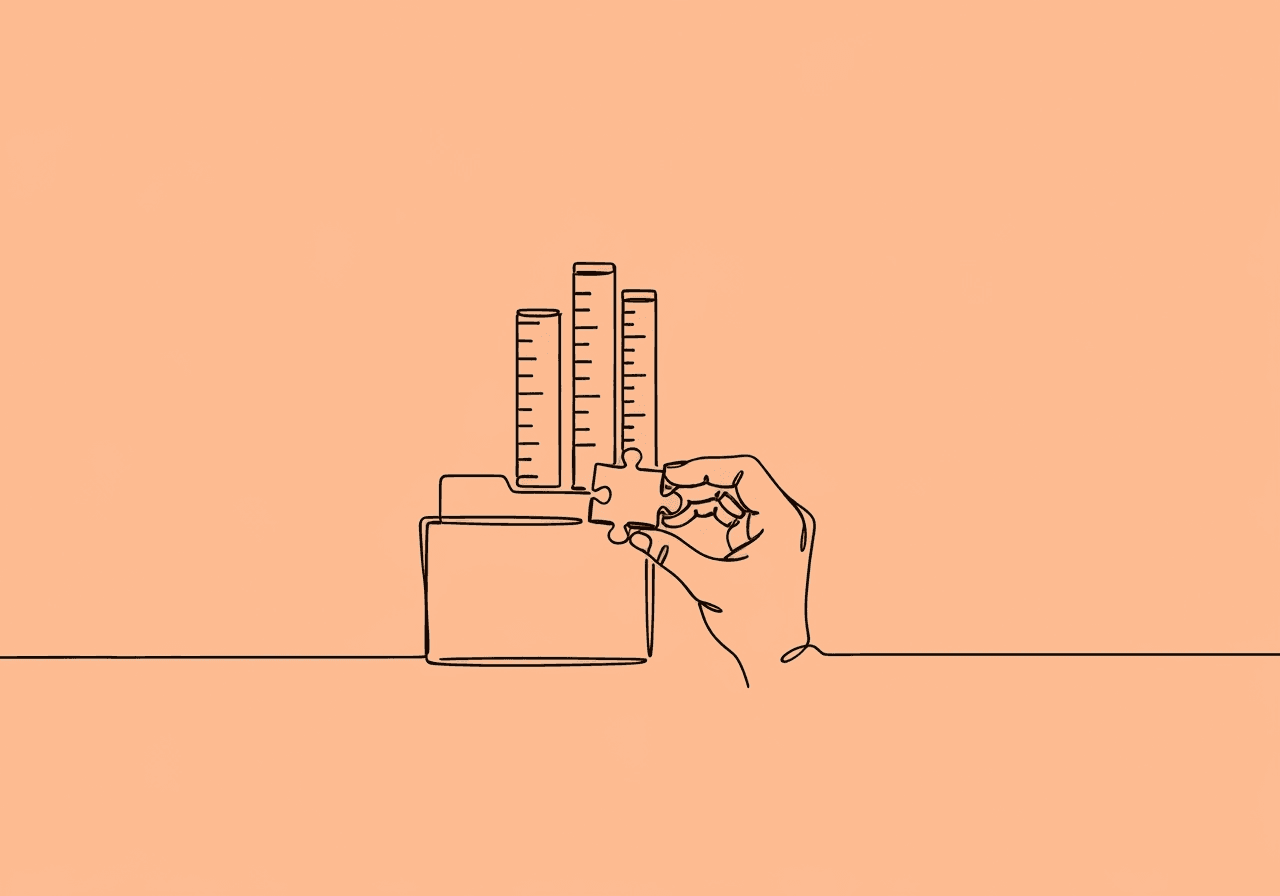Interprofessional ABA Collaboration Terms for BCBAs

Why Interprofessional Collaboration Matters in ABA Therapy
Interprofessional collaboration blends ABA's focus on behavior with SLP's work on communication and OT's support for sensory-motor skills. This creates unified treatment plans for clients with ASD. Studies show these teams lead to better functional skill gains than isolated efforts. A 2021 study from the Association for Behavior Analysis International (ABAI) highlights how this teamwork avoids strategy conflicts. For example, it prevents ABA rewards from undermining SLP communication targets. Interventions then carry over to everyday settings more smoothly.
BCBAs start by spotting hurdles like varied jargon. This causes miscommunication in many multidisciplinary cases, according to a 2022 review in the Journal of Interprofessional Care. Shared terms build respect and keep practices evidence-based. In the end, it puts clients first. Family views help shape clear progress measures. This cuts provider stress and lifts therapy results.
You gain practical perks too, like shared data logs for tracking. It also meets BACB ethics rules. Check the ABAI's interprofessional practice standards (2021) for team-building tips. Collaboration helps ABA pros deliver well-rounded results. Think improved social fit and lasting skill gains.
Core Collaborative Terms: Building a Shared Foundation
Team-shared ABA vocabulary begins with basic ideas that shape how groups work together. BCBAs, SLPs, and OTs use these to match up on client priorities and strong practices. They keep everyone on the same page.
What is Interprofessional Practice (IPP)? It's when pros from different fields team up for full care. They share choices and value each other's skills. The American Speech-Language-Hearing Association (ASHA, 2023) notes that IPP helps close gaps in ASD care through joint planning.
Client-Centered Care tailors help to what the client wants, values, and aims for. It often pulls in family help. The World Health Professions Alliance (2022) calls it a way to give clients a voice in choices. This raises buy-in for ABA teams across fields.
Social Validity checks if treatments fit socially and work well from the view of those involved, like clients and families. In ABA, a 2021 ABAI perspective says it makes sure steps like rewards match real-life needs. This aids skill carryover over time.
BCBAs note these in session logs by recording team talks. For instance, "IPP session matched FBA aims with SLP social targets for social validity." This draws from Interprofessional Education Collaborative standards (2016, updated 2023). It ties to better ethical, results-focused groups.
Crossover ABA Terms: Bridging Behavior Analysis with SLP and OT
Some ABA ideas fit right into SLP and OT work. BCBAs need to log them to back up group aims. These cross-team terms help grasp behavior reasons and skill shifts.
Take Functional Behavior Assessment (FBA). It's a step-by-step check of what sparks and keeps behaviors going. It often guides SLP views on talk issues or OT takes on sensory reactions. The Behavior Analyst Certification Board (BACB, 2022) requires FBAs for right interventions. Cross-field links include tying avoidance behaviors to OT sensory fixes.
Generalization means skills learned move to new people, places, or cues. It's key for blending ABA, SLP, and OT. A 2023 ABA glossary from Study Notes ABA says it helps ABA requests carry to OT hand tasks. Log it with checks in varied spots.
Reinforcement Systems use rewards, positive or negative, to build behaviors. They adapt to SLP social skills or OT daily routines. Songbird Care (2023) points to their boost in drive. BCBAs record cases like token setups aiding SLP back-and-forth.
In real work, BCBAs weave FBA ideas into group plans. Example: "Generalization check: Client applied ABA reward to finish OT big movement in a new place." This fits BACB rules and lifts results. See a 2021 PMC study on ABA-OT teamwork for proof.
Essential SLP Terms for BCBA Documentation
BCBAs should learn SLP words to log talk growth right in group ABA SLP OT documentation. These keep ABA help in step with speech aims, avoiding mix-ups.
Augmentative and Alternative Communication (AAC) offers tools or ways to add to or swap for speech. Think picture swaps or voice devices. The ASHA (2023) sees AAC as crucial for those who don't speak much. BCBAs track its fit in reward notes, like requests through gadgets.
Communication Modalities cover different ways to send messages, from signs to eye looks. AAC Language Lab (2023) says options like pointing aid ABA cue steps. Log shifts like "Client moved from sign to spoken after reward."
Pragmatics deals with social talk rules, like sharing turns or fixing chat slips. A 2023 Verbalyze guide stresses its part in talks. BCBAs note how ABA social plans affect chat hitches.
Tip for logging: Tie ABA ABC notes to SLP words. Say, "Trigger: Friend cue; Action: Social fix with AAC; Result: Group reward." This aids social fit under ABAI standards (2021).
Key OT Terms: Integrating Sensory and Motor Skills in ABA Notes
OT words help BCBAs log how ABA tackles sensory-motor gaps in cross-disciplinary ABA glossary settings. They allow sharp tracking of daily self-reliance.
Activities of Daily Living (ADLs) and Instrumental Activities of Daily Living (IADLs) are musts. ADLs hit basics like washing or meals. IADLs go to tougher jobs like shopping or handling cash. The American Occupational Therapy Association (AOTA, 2023) links them to ASD needs. BCBAs log ABA step breakdowns for ADL spread, e.g., "Broke down bathroom routine with 80% self-help."
Sensory Integration is how the brain handles senses like touch or balance for good reactions. ConnectABILITY (2023) says it drives OT help. Add to ABA logs as "Sense pause rewarded before big movement to cut running off."
Fine Motor and Gross Motor Skills matter too. Fine covers exact hand-eye work like fastening. Gross hits big body moves like hopping. A 2023 CSLOT glossary ties them to routine life. BCBAs enter ABA info like "Hand skill reward boosted pen hold in label training."
Strong move: Put OT words in behavior plan tweaks. Cite advance numbers to show group effects. This follows AOTA's interprofessional guidelines (2022).
Best Practices for Documentation of Shared Goals
Logging group aims in teams calls for simple, open styles. This keeps ABA, SLP, and OT in sync. Evidence-based ways cut mistakes and aid billing.
Here's how:
-
Set Unified Goals: Build SMART targets in IPP talks. Example: "Client will request with AAC in OT routines at 90% right." 2023 CBS Therapy guidelines push this for result matches.
-
Pick Integrated Platforms: Use safe tools for live note swaps. Log field-cross info like FBA tips shaping SLP ways. A 2022 PMC article shows this betters talk flow.
-
Add Data-Driven Updates: Follow advance with shared measures. Like checks tying ABA rewards to OT body skills. BACB rules (2022) call for true checks.
-
Bring in Families: Add parent views to logs for social fit. AOTA's joint statement (2023) says this aids home use.
Term gaps can pop up. Fix with practice, like in ASHA's collaboration resources (2023).
Frequently Asked Questions
How does interprofessional collaboration specifically improve outcomes for children with autism?
Interprofessional teams mix ABA, SLP, and OT to hit linked needs better. This boosts skill pickup, like using FBA to blend AAC. Studies note clearer gains in talk and self-help. BCBAs log this with shared trackers for ongoing wins. Source: Advanced Autism Services (2023).
What are the main challenges faced in interprofessional collaboration for autism treatment?
Term differences and time clashes hit about 40% of teams. A 2022 Journal of Interprofessional Care review covers this. Fixes include shared training and one-style logs. BCBAs help by explaining words like pragmatics in notes. Source: Journal of Interprofessional Care (2022).
How can professionals from different disciplines effectively communicate to ensure cohesive treatment plans?
Shared word lists and steady meets help match on ideas like social validity. This cuts repeats. The ABAI (2021) suggests data-share rules. Log talks in IPP files for easy checks. Source: PMC (2021).
What role do families play in enhancing the effectiveness of interprofessional collaboration in autism therapy?
Families give real-life views for client-focused care. They check social validity with input. PAHO/WHO guidelines (2023) stress this for better skill spread. BCBAs log family notes in aim checks. Source: PAHO/WHO (2023).
How do the unique perspectives of SLPs and OTs contribute to the overall treatment strategy in ABA therapy?
SLPs bring talk ways for social skills. OTs handle sense processing for body skill spread. A 2023 Mastermind Behavior post says this full view lifts daily results. BCBAs blend via group FBAs. Source: Mastermind Behavior (2023).
How is social validity measured in ABA-SLP-OT collaboration?
Use surveys from those involved to gauge treatment fit. ABTABA (2023) guides this. Track skill spread in joint logs. Tie to talk rules or daily tasks. Source: ABTABA (2023).
Autism treatment is changing fast. Terms like these are key for BCBAs working with SLPs and OTs. With ASD rates at 1 in 36 kids in the U.S., per Centers for Disease Control and Prevention (2023), integrated care meets tough needs like talk blocks, sense issues, and routine skills. BCBAs who grasp cross-disciplinary ABA glossary parts can boost team work, cut split efforts, and lift client results via joint logs.
This glossary piece arms BCBAs with exact meanings, field-cross uses, and log tips for ABA SLP OT documentation. It covers base team ideas, ABA terms that link fields, must-know SLP and OT words, goal-match practices, and ways to build one language for full growth.
- Master shared terms to cut talk gaps and align aims fast.
- Use cross-field ABA ideas like FBA to support SLP and OT goals.
- Log SLP pragmatics and OT ADLs in ABA notes for clear tracking.
- Follow joint doc steps to meet ethics and boost outcomes.
- Involve families in plans for real-world skill carryover.
Using these terms in your team can really change how you work together. It makes BCBAs key players. As CDC data (2023) shows growing needs, this way raises social fit and skill spread. It holds to BACB rules with spot-on ABA SLP OT documentation. Clients gain full steps, from social talk to routine mastery, backed by matched aims.
Start with a group word check. Log field links in your next plan. Review notes every three months for fit. Teach RBTs core words. This base across fields lifts client self-help and group strength.
(Word count: 1,756)
Popular in ABA Session Notes & Tools
- 1
RBT Supervision Documentation: 2025 BACB Guide & Templates
1,2579 min read - 2
Master ABA Medical Necessity Documentation: Avoid Denials
5769 min read - 3
Master ABA SOAP Notes: Guide for RBTs & BCBAs
5249 min read - 4
ABA Documentation Best Practices for RBTs: Essential Tips
4955 min read - 5
Guide to ABA Progress Reports for Insurance Reauthorization
4318 min read
Popular in ABA Session Notes & Tools
- 1
RBT Supervision Documentation: 2025 BACB Guide & Templates
1,2579 min read - 2
Master ABA Medical Necessity Documentation: Avoid Denials
5769 min read - 3
Master ABA SOAP Notes: Guide for RBTs & BCBAs
5249 min read - 4
ABA Documentation Best Practices for RBTs: Essential Tips
4955 min read - 5
Guide to ABA Progress Reports for Insurance Reauthorization
4318 min read
Related Resources
Explore more helpful content on similar topics

Advanced ABA Documentation Terms: BCBA Glossary
Explore advanced ABA documentation terms crucial for accurate data collection, compliance, and treatment fidelity in ABA therapy. Discover key concepts like IOA, Trial Blocks, and medical necessity to elevate your BCBA and RBT practices.

ABA EMR vs EHR Guide for BCBAs: Key Differences
Explore ABA EMR vs EHR differences tailored for BCBAs. Learn how specialized ABA documentation software excels in data collection, while EHR boosts interoperability for comprehensive care. Discover tips to select the ideal system for your practice today.

Reduce RBT Documentation Burnout: 10 BCBA Strategies
Discover 10 proven BCBA strategies to reduce RBT documentation burnout and streamline ABA documentation. Follow workload guidelines, boost retention, and enhance client outcomes. Start today!